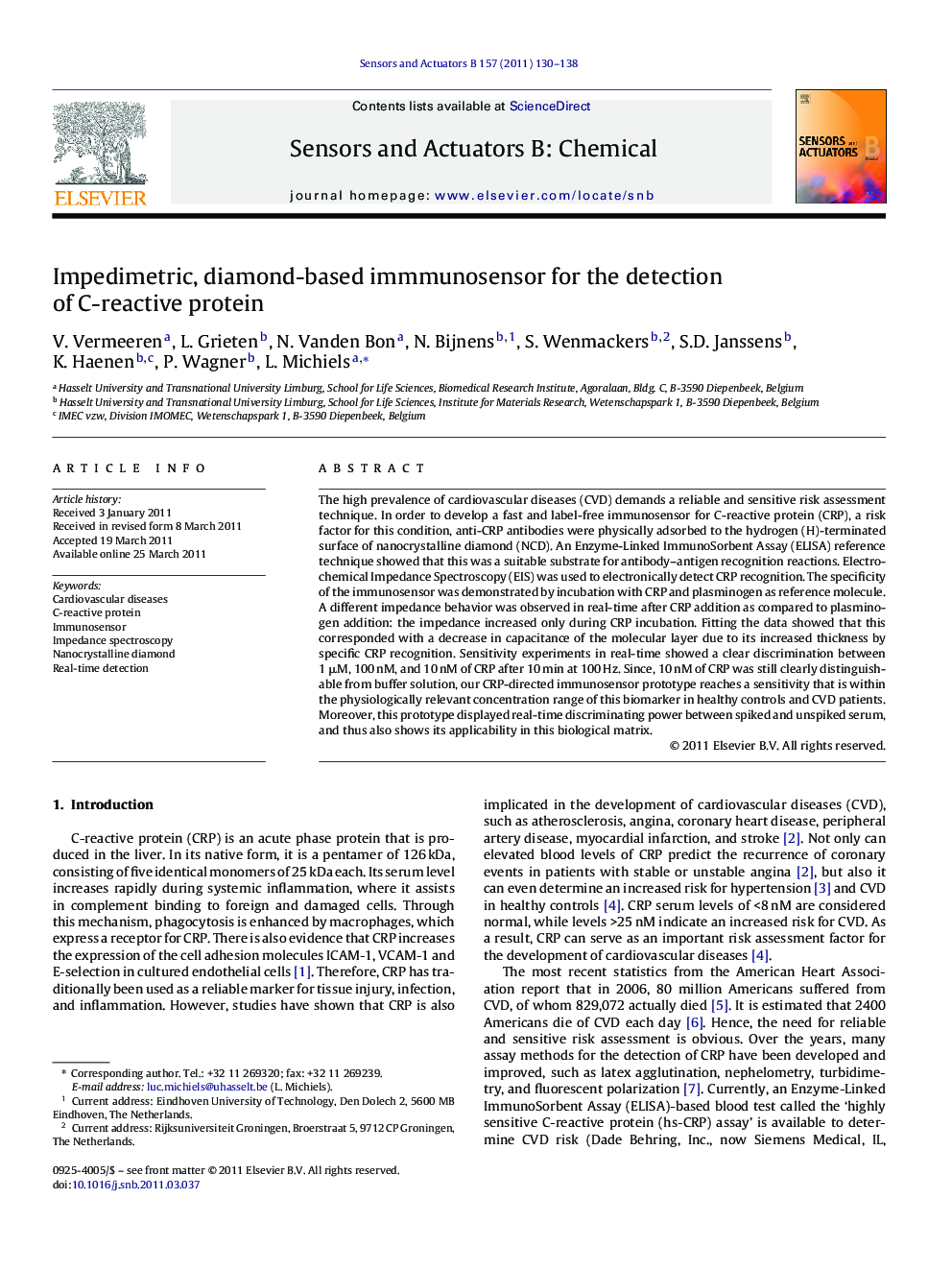| Article ID | Journal | Published Year | Pages | File Type |
|---|---|---|---|---|
| 745767 | Sensors and Actuators B: Chemical | 2011 | 9 Pages |
The high prevalence of cardiovascular diseases (CVD) demands a reliable and sensitive risk assessment technique. In order to develop a fast and label-free immunosensor for C-reactive protein (CRP), a risk factor for this condition, anti-CRP antibodies were physically adsorbed to the hydrogen (H)-terminated surface of nanocrystalline diamond (NCD). An Enzyme-Linked ImmunoSorbent Assay (ELISA) reference technique showed that this was a suitable substrate for antibody–antigen recognition reactions. Electrochemical Impedance Spectroscopy (EIS) was used to electronically detect CRP recognition. The specificity of the immunosensor was demonstrated by incubation with CRP and plasminogen as reference molecule. A different impedance behavior was observed in real-time after CRP addition as compared to plasminogen addition: the impedance increased only during CRP incubation. Fitting the data showed that this corresponded with a decrease in capacitance of the molecular layer due to its increased thickness by specific CRP recognition. Sensitivity experiments in real-time showed a clear discrimination between 1 μM, 100 nM, and 10 nM of CRP after 10 min at 100 Hz. Since, 10 nM of CRP was still clearly distinguishable from buffer solution, our CRP-directed immunosensor prototype reaches a sensitivity that is within the physiologically relevant concentration range of this biomarker in healthy controls and CVD patients. Moreover, this prototype displayed real-time discriminating power between spiked and unspiked serum, and thus also shows its applicability in this biological matrix.
